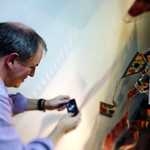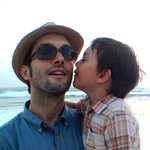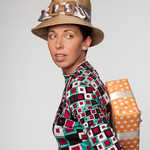

Today’s office is a ryokan halfway up a mountain in Japan’s northern island ofHokkaido.
March 24th, 2006, 11pm
Today’s office is a ryokan halfway up a mountain in Japan’s northern island of Hokkaido. I’m here with Raphael, a research colleague to catch up on the last year, figure out where we want to go in the next and somewhere along the line make the most of what the mountain has to offer. In the village outside it’s minus ten and for the third night in a row it’s dumping it down.
The building we are staying in was at first glance a disappointment — semi-industrial in a run-down-damp sort of way, but after three days the room starting to feel like home. It helps that every evening the staff leave a thermos of hot water in the room (we happen to have some decent freshly ground coffee and a cafetière), that there is a spacious open air onsen 5 minutes away, and that someone nearby has left their Wi-Fi unsecured, bless them.
I’m tucked up in bed, and on the floor to my left a digital camera has been broken down into its composite parts and is (hopefully) drying out after being submerged in the snow. The challenge of capturing data in difficult conditions is a familiar one but tonight presented some new hurdles: a combination of the cold (around minus eighteen on the mountain); horizontal in-your-face winds; the need to remove outer glove-wear to be able to properly handle equipment; and a constant heavy snowfall meaning that after twenty seconds or so a new snow-drift has built up on the edges of the lens. Given the circumstances the only way to clear the camera lens of snow was to lick it whilst avoiding having my tongue stick to its metal frame (the alternative is to piss on the lens protector, I’m not convinced I’d be sufficiently agile to direct the stream where it is needed, and am not prepared for my colleague to do the deed). In all I’m satisfied that the camera continued to work and that photos and memory card survived the cold.
User experience practitioners often use personas and scenarios to understand and communicate how a product will be used. But what are acceptable limits, and what happens when use falls outside acceptable limits? Is it reasonable to expect a camera to function in these conditions? Is it reasonable to expect your phone to work after being run over by a car? For your iPod to sit in your pocket without it scratching?
There are three trends that are likely to considerably shift consumer perception of what constitutes acceptable use: miniaturisation; the availability of flexible components; and the ability to track products over a lifetime. Once objects reach a certain size the range of places that they can be comfortably carried and stored increases making it feasible for it to be carried without significant extra burden for the user, comfortably placed in a pocket or tucked in amongst other objects in a bag. The new range of contexts in which they can now freely roam stretches the perceptions of their acceptable boundaries of use.
It is more comfortable to carry a flexible object next your (soft, fleshy, human) body than a hard object. Smart use of flexible components will further expand the range of use cases for many products and along with it, user expectations.
Finally the ability to track objects (and for objects to track us) from purchase, through usage to disposal (and for objects to the disposing of us) will change our notions of ownership, use and abuse, which will change our perception of the consequences for going over these boundaries.
Which in turn changes our notion of receipts and warranties. Pretty much everyone carries some receipts, whether its to make an expense claim, for personal accounting, because the objects might need to be returned, or as proof of purchase because without it the shopping experience feels more awkward, as if everything in your bag might be stolen.
In a world where the consumption of goods and services are inherently tied to a known identity (and that known identity’s ability to pay) much of the usefulness of the receipt, as a physical manifestation of proof of purchase goes out the window. Today we are very much shaped by what we carry. Increasingly we will be shaped and defined by what we don’t need to carry.
Taken from Today’s Office, a year on the road.








